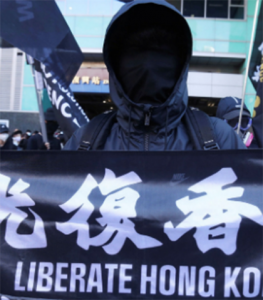Increasing numbers of Chinese seeking asylum
Increasing numbers of Chinese are fleeing their homeland and seeking asylum overseas, according to new data from the UN’s refugee agency UNHCR.
Between 2012 and 2020, the annual number of asylum-seekers from China rose from 15,362 to 107,864, the data shows.
 Since China’s leader Xi Jinping took power at the end of 2012, 613,000 Chinese nationals have applied for asylum in another country.
Since China’s leader Xi Jinping took power at the end of 2012, 613,000 Chinese nationals have applied for asylum in another country.
About 70 per cent of them have sought asylum in America with many arriving on tourist or business visas, and then making an asylum application.
According to Human Rights Watch and the Washington-based think tank The Stimson Centre, the increase has coincided with the rule of Mr Xi, who they say has governed China with an iron grip that has become more repressive each year.
Stimson Centre researchers say Uyghurs and other Turkic minorities have particularly felt repression, with at least a million them detained in concentration camps.
According to reports from former detainees and analyses of satellite imagery, prisoners are subjected to torture, forced sterilisations and indoctrination.
“Those outside the camps live under near-constant surveillance; some have been forced to work in factories in other parts of China. Hundreds, possibly thousands, have fled overseas,” the researchers say.
In 2019 Sweden started granting automatic asylum status to Turkic minorities from Xinjiang, although only a few dozen people from China of any ethnicity apply for asylum there each year.
America does not publish data based on ethnicity, but in 2019, 7,478 Chinese people were granted asylum there, more than any other nationality.
The UNHCR says the majority of Chinese asylum-seekers are likely to be Han, an ethnic group that makes up more than 90 per cent of the population.
They are not subject to race-based persecution but many have seen their freedoms diminish since 2012.
In 2015 248 human-rights lawyers and activists were detained and questioned by the police in what became known as the ‘709 crackdown’.
Although only a handful were actually charged, the round-up was widely seen as a signal from Mr Xi that he would not tolerate dissent.
In recent years members of foreign and domestic NGOs, feminist organisations and churches have also been arrested.
“It is hard to generalise about the Chinese asylum-seekers in America but a variety of human-rights abuses have driven people to flee their home country. In recent years there have been reports of an increasing number of Chinese people crossing the border into America via Mexico, although this only accounts for a fraction of the total number of asylum seekers,” the Stimson researchers said.
Meanwhile, the atmosphere in Hong Kong, which has been formally under Chinese sovereignty since 1997, is also unstable.
But the number of people from there claiming asylum in other countries has rarely entered triple figures. Only once, in 2019, the year in which the city was wracked by pro-democracy protests and violent clashes with the police, did the number surpass 200.
But this is mostly because Hong Kongers who want to leave often have other, more regular exit paths.
Many countries welcome wealthy and educated Hong Kongers. Australia offers generous visa policies to Hong Kongers already in the country and Britain provides its former colonial subjects with a path to full citizenship.
Between February and March this year, the first two months of the scheme launching, 34,000 Hong Kongers applied to come to Britain.
But for those in mainland China wanting to get out, the path is more complicated. For Uyghurs in particular, leaving China or having any contact with foreign countries can put their families at risk.
And would-be emigrants face the same problems of money, language and borders that inhibit people all over the world.
People fleeing China is nothing new. In the 1960s, tens of thousands of people fled China’s Cultural Revolution. As the country stabilised, that number dropped.
But seven decades on from the UN Convention on Refugees, which was signed on July 28th 1951 and set out the rights of people who are granted asylum, the number is rising rapidly once again.












